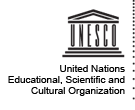The proposed project will contribute to professional capacity building and support to institutions that underpin freedom of expression, pluralism and diversity through advanced practical training in the field of broadcasting (with focus on radio),according to UNESCO's Model Curriculum with the aim to increase the number of well-trained broadcast journalists in South Sudan.The aim is to equip them with skills that enables them elaborate professionally designed programmes for their radio stations and above all, their audiences with gender sensitive programs.
IPDC Project beneficiary type: Media training institutions
There are approximately 26 radio stations currently operating in Jamaica. Of this amount the vast majority are commercial entities focused on pop culture and headline news content. Less than ten are community broadcasters and even so, they are struggling to meet basic bills for light and equipment let alone investments in content development and capacity development. Whereas these stations are hugely popular in their communities, their lack of broadcast skills and capacity, prevents them from providing the communication support for community development required by their citizens.
...
This project seeks training support for the Bhutanese media to be more sustainable. In order to achieve a more holistic result, the project includes two training components addressed to journalists: one is developing skills on reporting rural issues in order to attract wider circulation in rural area, and subsequently to attract increased government advertising revenue. The other one is reporting economic, financial and business issues. Better business reporting is expected to attract specific urban audiences and subsequently increase advertising revenue. On the other hand, the media...
The proposal plans to work with 120 representatives. In La Paz, Cochabamba and Santa Cruz, each workshop will involve:
1) 5 public authorities and social actors.
2) 5 mass media journalists and trade unions’ representatives.
3) 10 students and professors from public and private universities.
In each case, men will represent the 50% of beneficiaries and women the other 50%.
CEPPAS proposes to train women journalists on the use of ICTs for investigative journalism. The project targets Verapaces, North East and Petén; Western; South East, Central and Metropolitan Regions which suffer a profound digital divide and where women have little say in the community media, in which they work. The proposal is based on three pillars: gender equality; community media; technology and innovation with emphasis on FOSS.
Three workshops of three days each will involve women-journalists. CEPPAS will also hold a Forum on Women and Journalism involving media and advocacy...
This project will use the UNESCO safety indicators to research the safety issues impacting media practice in Liberia, which faces growing local and international concern. There will be a series of Monrovia-based expert interviews and focus group discussions targeting specific professionals with links to these safety issues, organized into four regional clusters.
This project is important given the current situation in Liberia. The last ten years have been characterized by peace and democratic renewal, with a growing number of media houses and improvement in media content as...
Evidence increasingly points in the direction of growing threats to the safety of journalists in Nigeria. This is highlighted by the claim by the Nigeria Union of Journalists (NUJ), the trade union and professional umbrella body of thousands of practicing journalists in Nigeria, that 13 journalists were killed in the course of assignments in the year 2012, representing the highest so far since the country’s independence in 1960. This is beside other forms of attacks, threats and intimidation. However, despite this apparent evidence, an outstanding problem is that of the absence of an...
Niger has a free, pluralistic and independent media, which comprises, according to the High Council for Communication – the media regulatory body –, 2 state-owned newspapers (one daily and one weekly), 48 privately-owned newspapers, one of which is a daily, 1 state-owned radio station, 7 state-owned regional stations, 51 privately-owned radio stations with 37 relays, 133 community radio stations with 2 relays, and 18 authorised television stations with 23 relays, two of which are state-owned. To date, there are 133 community radio stations in Niger which hold a licence issued by the High...
Journalists in Malawi face considerable risks to their safety as they conduct their professional duties. Restrictive media laws are in place and some journalists are not aware of the full implication of these laws, which exposes them to even greater danger. For example, during the protests on 20 July 2011 about issues of human rights and poor governance, police ordered a crackdown on journalists attempting to cover the event and reportedly beat, arrested and harassed some of them. The state broadcasting regulator also directed three independent radio stations to stop coverage of the...
In this project, JIIM will target FM radio stations, TV stations, newspapers and online media operating in Juba, Bentiu, Torit, Kuacjok, Wau, Yambio, Awiel, Malakal, Bor and Rumbek in South Sudan. This project seeks to address the lack of cultural news programmes in existing media by training cultural reporters to source, produce and relay cultural news to the South Sudanese public. Twenty journalists will be trained in cultural reporting. Participants will learn to respect cultural diversity and abide by other cultural norms when reporting about South Sudanese cultures. The project will...
